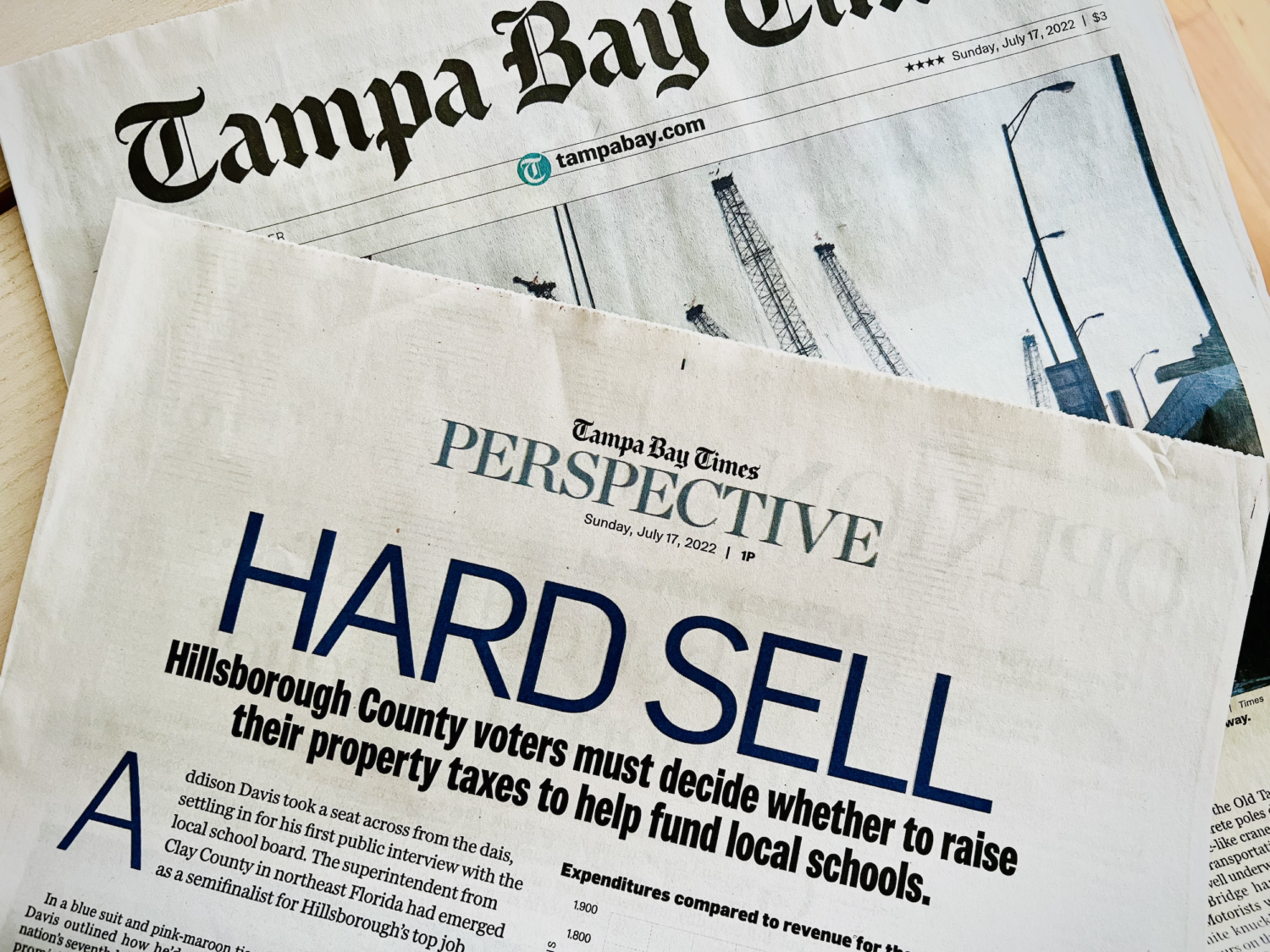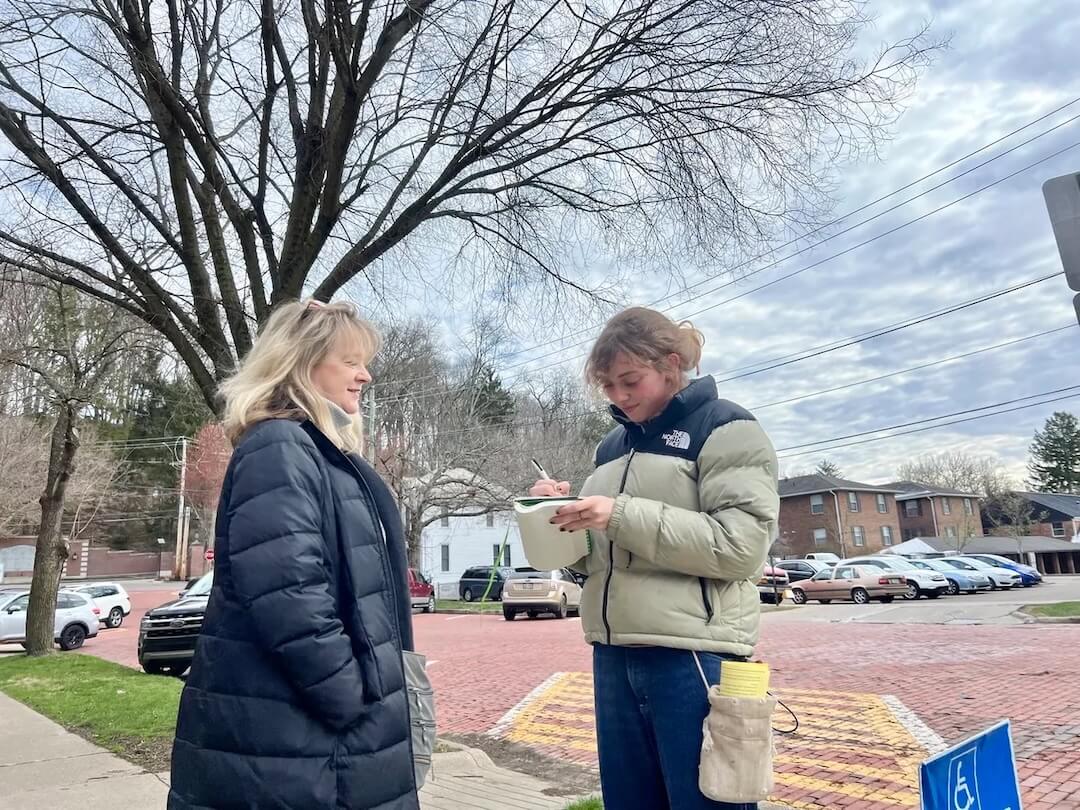A month ago I reported, as did The Washington Post, that Gannett had directed its 250 papers to stop lecturing readers, cut back on institutional voice editorials and save staff and newsprint expense by eliminating print opinion pages most days of the week.
That may be a fait accompli at Gannett, but I see the company’s new definition of best practice continue to spark a range of strong opinions (pardon the expression) inside the company and out.
Here is a sampler of reactions I have harvested over the last month:
An editor blasts the directive
The editor of a mid-sized Gannett paper, asking for anonymity because they fear retaliation from the company for speaking out, told me in one of several conversations, “Opinion is really important. … (People need) models of how to have civil discussions” at a time “when there is so much blather on social media.”
Community-generated columns are part of the mix, the editor continued, but so is reasonable advocacy in the newspaper’s voice. Well-crafted local editorials do fine in traffic and response.
The editor took particular exception to how the policy was changed. “It came down very hard and swiftly … very top-down with no consultation with editors.”
Amalie Nash, senior vice president for local news and audience development, had pointed me to an April memo that described the cutbacks as recommendations rather than directives. “Bulls***,” the editor said.
Nash’s memo, which was cast as a strong suggestion, was followed two months later by “an order” from one of Gannett’s design centers that produces pages remotely.
Nash told me in an email, “Inflationary pressures and rising costs necessitated that we look closely at page counts, and in some cases led to reductions. Our Design Center worked closely with editors on those plans, including how much space is being dedicated to opinion content.”
“Ha, ha,” the editor emailed me when shown the comment. “If by ‘worked closely with editors’ she means sent down an edict, then I suppose yes.”
Several editors’ notes at various papers that explained the reduction to readers apologized for the abruptness and at least implied the decision came top-down from corporate headquarters.
Cost-driven and one size fits all?
Brendan O’Meara is a part-timer who functions as opinion editor of The Register-Guard of Eugene, Oregon. The evening after my story appeared, he wrote in an email:
I was once on the editorial board. We used to write editorials. Then the publisher got canned. The executive editor got canned, and I stayed on to be the steward of the sinking ship. I only didn’t get canned because I’m cheap ($18.50 an hour) and part-time.
A few weeks ago we went from seven days to three. And this week we go from three to two.
With each draining of the pool, fewer people submit letters and guest essays, which keeps the product circling the drain until nobody submits anything.
Plus, over the past few years, all our opinion content was categorically sandbagged and never given any socializing. Thus they perform poorly. When they perform poorly, it can be cut.
It’s all bogus. I hate it. But what can you do? Who can even afford to be a journalist? I can because my wife makes three times as much as I do. But that’s a conversation for another day!
O’Meara told me in a phone conversation that he is planning to leave the company this summer so did not mind being quoted by name. As his email suggests, O’Meara sees the downsizing as relentless, first as The Register-Guard moved from family ownership to the GateHouse chain, then to Gannett after the merger with GateHouse in late 2019.
“They notice when things are shrinking down,” he said of readers in Eugene, a laid-back liberal college town and the original home of Nike. O’Meara rarely writes editorials anymore, relying instead on a prolific columnist and various community contributors.
One of his strategies, O’Meara said, has been to drop in an occasional right-wing column to stir up dialogue. “We published one by Marc Thiessen, a super-conservative Washington Post columnist,” and that sparked some indignant letter writers and opened a dialogue.
That door is closing, too. One of Gannett’s moves earlier this year was to cancel most nationally syndicated columnists. Each such step, O’Meara said, “takes away any core vitality the paper still has.”
Behind Gannett’s confidence that community conversations are the better way
In my exchanges with Nash, she has said that remaining internal critics are outliers. The shift downplaying conventional editorials had been in progress and accepted for years at Gannett and has taken root at the former GateHouse papers as well.
In our first interview, she mentioned that The Tennessean in Nashville leads the way with a host of community dialogue initiatives in both its digital and print editions — plus an unusual closed Facebook group, where participants must pledge to remain civil.
I called Michael Anastasi, Tennessean executive editor and regional editor for the South, who chaired a 2018 committee of Gannett editors that looked hard at traditional editorial pages and judged them mostly obsolete.
“I began on this more than 10 years ago,” Anastasi said, while editing the Los Angeles News Group (part of the Digital First chain, now MediaNews Group, owned by hedge fund Alden Global Capital). He experimented there with a range of engagement and dialogue initiatives, including open houses for community issues discussion.
When Anastasi moved to The Tennessean in the mid-2010s, he found a kindred spirit in opinion and engagement director David Plazas. Together they set about replacing a traditional editorial page lineup with opinion content from their own local columnists and community contributors.
“The magic superpower (for a regional newspaper) is to convene,” Anastasi told me. “Tell them they can come (and contribute) and they will.”
At the same time, Gannett was doing market and traffic research suggesting that editorials and national columns were not liked and not read in the polarized climate of the Trump years. Confusion over the distinction between news reports and opinion, already an issue in the print era, was substantially worse for digital content.
Many other Gannett editors had reached the same conclusion or came onboard, resulting in a committee recommendation in 2018 of the big changes throughout the chain that have swept along some stragglers this spring.
What took so long? The Gannett/GateHouse merger happened in late 2019, requiring a massive yearslong effort to integrate the GateHouse outlets, and editorial page changes fell far down the list. Plus there were the two years of coping with COVID-19 and ad shortfalls.
Anastasi’s formula steers away from soft content. “These are hard conversations,” he said, “but we have found a lot of people who yearn for them. … It’s also part of a strategy that we think contributes to brand perception and growth.”
I asked whether any members of the closed Facebook group have been expelled for uncivil behavior. Occasionally, Anastasi said, but typically the group itself enforces standards when exchanges become too heated.
Anastasi hasn’t seen much to change his mind about a more traditional editorial page approach. “I’m a voracious opinion reader and read The New York Times, The Washington Post and The Wall Street Journal every day. … But there are still (regional) sites that, to my mind, continue to produce mediocre pages with a lot of blah, blah, blah. … A lot are still doing (editorials that are) just beard-strokers.”
So is there still a place for editorials at The Tennessean? When a big local or state issue calls for it, he said. An example was a proposed radical reform of state education funding formulas. The paper did a special section that included briefing details of the legislation, a half-dozen opinion viewpoints and the Tennessean’s own editorial (in favor).
How often do such institutional editorials run? About eight times a year, Anastasi said.
On the other hand — why not both?
My impression that many sites outside the Gannett chain still go for a mix of community-driven conversation and vigorous editorials on local matters was borne out by checking a few during the July 4 week.
Scanning The Times-Picayune/Advocate in New Orleans, McClatchy’s North Carolina papers and The Post and Courier of Charleston, South Carolina, all had six or more editorials, even in a holiday week.
Rick Nelson, opinion editor of The Post and Courier, explained the organization’s policy in an email:
We typically produce about 10 editorials and three staff-written columns per week, run letters to the editor and publish a full op-ed page three days a week. Sunday is a three-page section with two editorials, letters and two op-ed pages. …
We believe it’s especially important to tackle topics that news organizations, sometimes including our own, have overlooked or topics on which we believe we can educate readers so they better understand how their government on the local, state or federal level is (or isn’t) working.
A robust opinion section helps drive the community conversation and serves as a place to exchange ideas, especially on local and state issues that generally have more impact on people’s day-to-day lives. It’s a place where citizens still gather to debate viewpoints and have their voices heard.
The newspaper is committed to providing that space, which is important in a world where the loudest voices increasingly try to crowd out everyone else. We are fortunate that the newspaper’s owners have consistently valued this work and are committed to doing so in the future. …
We track how well opinion pieces — both editorials and op-eds — perform online, and we work hard to give readers timely and relevant content; our editorials often end up among the most-read pieces on The Post and Courier’s website. But numbers aren’t the be-all, end-all of what we do.
Strong opinion pages perform a vital public service by fostering a dialogue and providing a space for different perspectives. People don’t always agree with our stands on issues, which makes sense. Our duty is to help spark constructive conversations and ensure that citizens have a place to make their voices heard.
We try very hard to give space to readers who disagree with our positions. Unfortunately, some people today believe the best way to fight an opinion they don’t like is to mischaracterize it or to try to disguise opinions as facts in rebuttal, and so in some cases it takes a good bit of work to salvage printable responses. So proper execution of an editorial page does require a significant financial commitment.
At The Post and Courier, that investment consists of three editorial writers (including Nelson), a metro columnist and three part-timers. Nelson is looking to add another editorial writer and part-time columnist as The Post and Courier expands its coverage into other parts of South Carolina.
A J-school dean weighs in
Edward Wasserman, professor of journalism and retired dean at the University of California Berkeley (and a friend from his days as a Florida editor), took up the cause of editorials in a July 8 op-ed in the San Francisco Chronicle.
His piece was headlined, “The nation’s biggest newspaper chain wants to scale back its opinion pages. That is a grave mistake.”
Wasserman suspects the Gannett changes are largely financially driven: “Controversy is no longer considered, even relished, as a staple part of news publishing; now it’s an expensive luxury. Gannett’s new policy will do away with nationally syndicated writers and put a premium on locally generated opinion focused on ‘local’ matters — at lower cost, naturally.”
His essay concludes:
Why disqualify the organizations whose entire mission consists of paying close attention to matters unfolding in the public sphere and explaining them to the rest of us?
True, as the Gannett critique points out, some of the chain’s opinion pages have grown stale and redundant, but that argues for an editorial reboot, not closure. And the idea that opinion columns improperly taint news reporting with institutional preference should be confronted, not surrendered to. Depriving readers of reasoned and thoughtful comment is no way to correct bias if it’s tilting news coverage.
Readers as writers
David Nelson, editor of Gannett’s Kitsap Sun west of Seattle in Bremerton, wrote for his readers a thoughtful explanation of the elimination of print opinion pages several days a week.
I noticed, scanning the Sun’s site, that opinion continues to get good play that includes highlighting individual letters to the editor.
When an opinion editor retired a few years back, Nelson decided to suspend, then later dissolve the editorial board and do the work himself, including writing regular columns, he told me. Even as institutional editorials wound down, he wanted the Sun to provide “a perspective that you can’t get anywhere … a feeling (for readers) that this is your editorial page.”
Encouraging letters to the editor seemed the best route to that end, and the Sun runs four to six every day.
Nelson seems to share a bias of mine — that many readers score with snappy commentary at letter length, but getting them to write essays is more problematic. I don’t particularly want to read what the school superintendent’s public relations person produces under the superintendent’s byline. Better a tough-minded staff column or Q&A.
What’s next?
I gravitate to Wasserman’s view that well-crafted editorials need not be stale and pro forma. But to hit those high notes you need seasoned professionals with strong reporting and writing skills — and they don’t come cheap.
The Gannett way does smartly elevate bylined opinion pieces by its own staff — as, for instance, The New York Times editorial pages now do, too.
I am afraid though that Gannett is a pacesetter for regional papers in another and unfortunate way — deciding that as financial pressure pinches, a full-out editorial/opinion effort may be the next thing to go.







